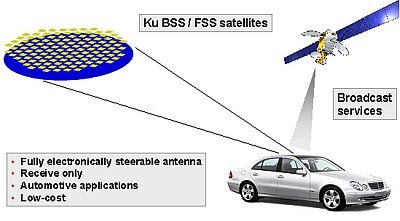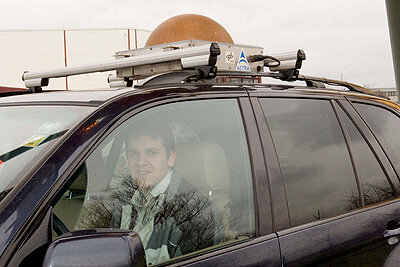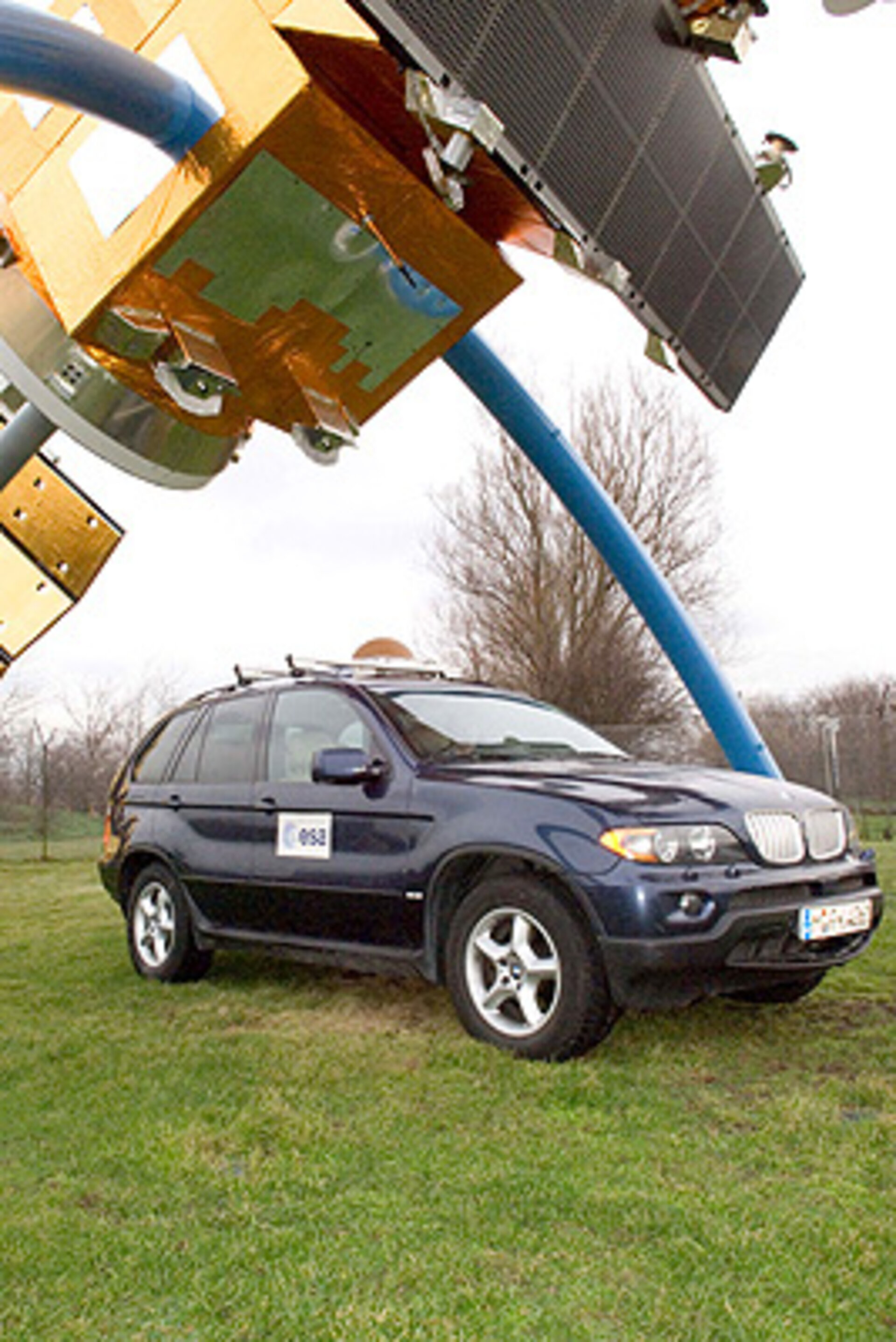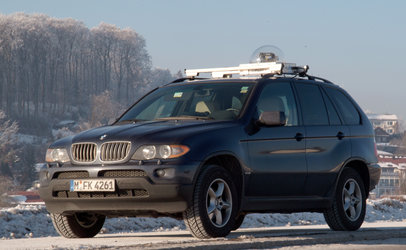Novel antenna for in-car satellite receivers
In January 2007, ESA and its partners demonstrated a satellite multimedia system for cars. Another ESA Telecommunications project, NATALIA, is designing a mass-producible antenna for this and similar systems.
The satellite multimedia system for cars works in a similar manner to a satellite receiver for television channels. However, a car cannot have a large dish antenna on its roof. The demonstrator vehicle uses a specially designed mobile antenna, reduced in height to make it practical for mobile use.
To receive the signals, the antenna must be pointed towards the satellite. For mobile receivers, the antenna direction must be adjusted as the vehicle orientation changes. On the demonstration vehicle this is accomplished by using a motor to turn the whole antenna.
NATALIA

The New Automotive Tracking Antenna for Low-cost Innovative Applications (NATALIA) project aims to design an antenna that is electronically steerable in both azimuth (compass direction) and elevation (height above the horizon). The design is intended to be suitable for mass production.
The NATALIA project is divided into two phases. The first phase, completed towards the end of 2006, consisted of a survey of possible antenna architectures and implementations and resulted in a high-level definition of the antenna concept. The second phase, now in progress, focuses on the technical implementation of this concept and the realisation of a demonstration model. This phase will last about two years.
Array antenna

The technology selected during the first part of the project is a ‘phased array’ antenna. A phased array is a group of antennas in which the combination of the signals from the various members of the group is varied in such a way that the ‘beam’ of the array is reinforced in the desired direction.
The NATALIA array is expected to be a disc with a diameter of around 20 centimetres. It will be built with multilayer technology similar to that used for the circuit boards of modern computers but using more advanced materials. The target thickness for the complete antenna assembly is around one centimetre.
The antenna array can be ‘printed’ on the top surface of the multilayer assembly. To perform the electronic steering, NATALIA will use microwave integrated circuits, similar in concept to the ‘chips’ used in computers, but operating at much higher frequencies.
The development of the microwave integrated circuits and the design of the multilayer structure to accommodate them along with the antenna feed systems and digital control electronics are the main challenges for the NATALIA project.





